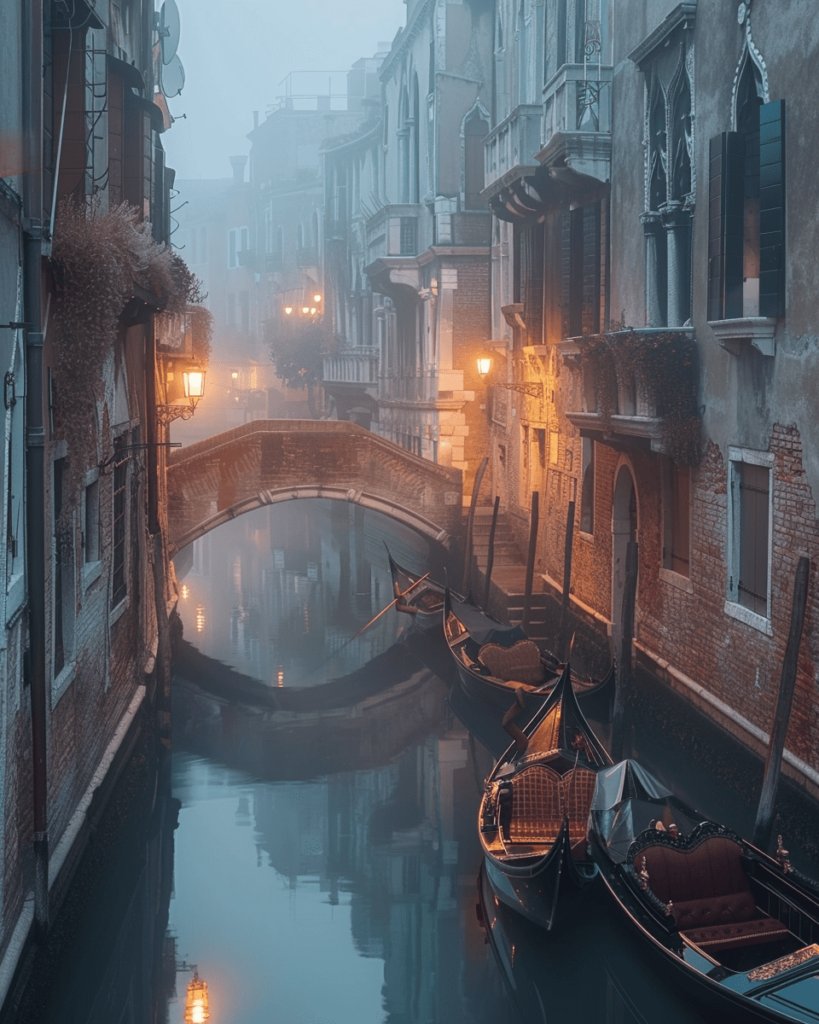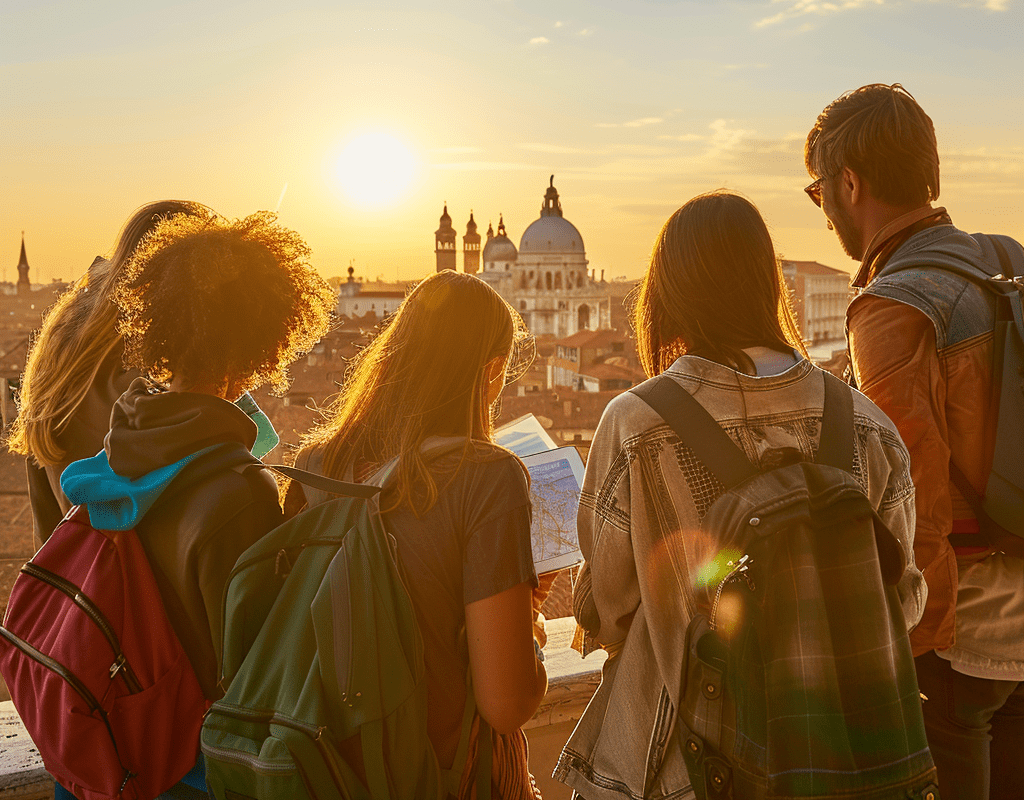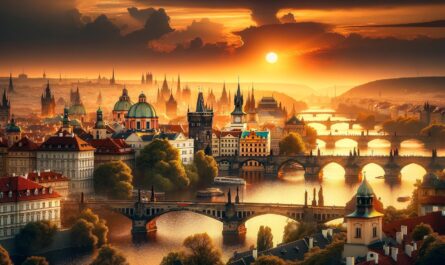Venice, this unique city on the water, has been attracting travelers for centuries with its unique atmosphere, history intertwined with legends, and architectural splendor. Every corner, every canal and bridge hides a piece of the past, shrouded in mysticism and mystery. Traveling through Venice is not just about sightseeing, it’s about immersing yourself in a world where every step tells its own story.
Echoes of the past
Venice, like a time capsule, keeps echoes of bygone days in its waters and walls. The founding of a city on the water was a unique response to the challenges of the times, providing a refuge from barbarian invasions. Over the centuries, on shallow waters and islands, a marvel of engineering and architecture emerged. The labyrinthine city, with its narrow canals and winding streets, has been home to many generations, each leaving their mark on its history. These traces of the past, be they magnificent palaces, secret gardens behind opulent facades or ancient churches, tell of the former power and glory of the Venetian Republic, of its trade routes that linked East and West, and of the cultural diversity it embraced.
Architectural masterpieces
Turning to the architectural heritage, it is impossible not to admire the skill of Venetian architects and builders, who managed to create harmony between water and stone. The buildings rising above the canals seem to float on the water, creating a unique image of the city. The facades, decorated with marble and mosaics, testify to the richness and sophistication of Venetian culture.
Among these architectural masterpieces stand out the buildings that have come to symbolize Venice: the majestic Doge’s Palace, and of course the Rialto Bridge, the oldest of the bridges spanning the Grand Canal.
Each of these architectural masterpieces carries a part of Venice’s history, its spirit and character. They have become not just tourist attractions, but living witnesses to an era when Venice was at the height of its greatness, leaving behind a rich cultural heritage that continues to inspire and fascinate visitors from all over the world.
Venice’s iconic sites
- Piazza San Marco is the majestic and impressive center of the city, where the famous basilica studded with mosaics and the majestic Bell Tower of San Marco are sure to catch the eyes of visitors.
- Doge’s Palace – a symbol of the power and splendor of the Venetian Republic, where every wall, every corner tells the political history of the city.
- Bridge of Sighs – the bridge connecting the Doge’s Palace to its dungeons got its name from the sighs of the prisoners who saw the beauty of Venice for the last time while crossing it.
- The Basilica of San Marco is a masterpiece of Byzantine art, decorated with countless golden mosaics telling Christian legends.
- Canal Grande – Venice’s majestic waterway, lined with ancient palaces and mansions reflecting their eternal beauty in the waters.
- The Galleria dell’Accademia – houses priceless works of art that showcase the greatness of the Venetian school of painting.

Legends and myths
The myths and legends of Venice are inextricably linked to its water canals and narrow streets, creating an atmosphere of mysticism and mystery. One of the most famous legends is the story of the cursed Bridge of Sighs, which connects the Doge’s Palace to the prison. It is said that the sighs of prisoners crossing the bridge can still be heard on quiet Venetian nights.
Another of the most mesmerizing stories has to do with the mysterious Phoenix, which is said to appear at dawn, leading a procession of ghostly gondolas. This legend symbolizes the eternal rebirth of the city, its unwavering spirit and its ability to survive against all odds.
Another mysterious story is the tale of the cursed love between the beautiful Violante and a rich merchant, whose souls still cannot find peace and their ghosts are seen on moonlit nights walking along the canals of Venice. These and many other stories make Venice not just a city of museums, but a timeless source of inspiration for writers, artists and anyone who seeks to touch the mysteries of the past.
Venice Carnival
One of the most colorful and memorable events in Venice is the annual carnival. Thousands of masks, costumes and the faces hidden behind them create an atmosphere of magic and mystery. Carnival is a celebration where the past meets the present and the streets and canals of Venice are filled with echoes of laughter and music. This festival, which goes back centuries, is a living reflection of the cultural richness and historical heritage of the city. During Carnival, Venice is transformed into a stage where every corner plays its part in creating an unforgettable spectacle. The masks and costumes, each a work of art, allow participants to temporarily immerse themselves in another reality where the boundaries between past and present are blurred.
Undercurrents of Venetian culture
Art is found here at every turn, whether it’s the magnificent canvases in galleries and museums, street performances or antique stores, each holding a piece of the past. But Venice is more than just an open-air museum; it is a living organism where every resident and every visitor contributes to centuries of history.
Music plays a key role in Venice’s cultural life. From classical concerts in historic halls to street musicians performing works by Vivaldi, the city’s musical heritage can be felt in the air, adding a special charm to the atmosphere.
Venice’s cuisine is also an integral part of the cultural journey. Venetian cuisine, with its traditional dishes such as seafood risotto, polenta and sardines in saor, reflects the influence of maritime trade and cultural exchange for which the city has been famous for centuries.
Venice is a city that is not just to be seen – it is to be felt, immersed in its atmosphere and allowed to be swept away by the current of its streets and canals.
FAQ
Doge’s Palace is considered a symbol of the power and splendor of the Venetian Republic.
The Bridge of Sighs symbolizes the sighs of the prisoners who saw the beauty of Venice for the last time while crossing it.
The Basilica of San Marco is known for its magnificent golden mosaics that tell Christian legends.


